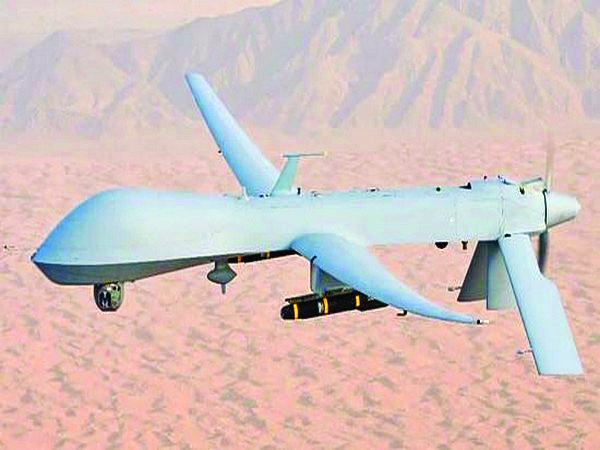NEW DELHI: India is buying 31 units of MQ-9B drones manufactured by General Atomics.
In February, the US State Department gave a green signal to the sale of a $3.99 billion weapons deal to India that included 31 units of MQ-9B drones, which are manufactured by General Atomics.
While 15 of these ultra-costly drones with expansive capabilities will be used by the Indian Navy, the remaining 16 will be divided equally between the Indian Army and the Air Force. Indian leaders had expressed the desire to buy these drones in June 2023. The first of these drones is expected to land in India by the end of 2026 and are likely to be placed in Uttar Pradesh and Tamil Nadu.
However, what is likely to ring alarm bells in South Block and North Block is the ease with which the Houthi rebels in Yemen have been allegedly able to bring these drones down since last year.
As per the claims made by the Yemeni military, last week alone they downed two of these drones in the Marib and Saada provinces of Yemen. Spokesperson for the Yemeni Armed Forces (YAF), Brigadier General Yahya Saree, in a statement on Tuesday, said since October, the Yemeni military has brought down the ninth such drone while it was flying over Yemeni airspace.
While it has not been revealed what weapon was used in these claimed attacks, defence experts following the region said that Yemen was using locally
As per military reports, the bulk of weapons that the Houthis have in their arsenal is smuggled piece by piece from Iran and then assembled in Yemen. These weapons, including the SAM, are smuggled by using dhows—small fishing boats. They also have weapons that they had seized from the Yemeni Army.
The Houthis took over Yemen’s capital Sanaa in September 2014 and officially took control of the Yemeni government by February 2015.
The Houthis’ military capabilities come nowhere close to the array of sophisticated anti-missile systems and offensive platforms possessed by both China and Pakistan. The majority of India’s arms acquisitions are made with these two entities in mind.
One of the reasons for the military pushing the government to purchase these drones, which along with its control room, missiles, and other equipment is, as per reports, valued at $30 million, is the situation on the India-China border in the wake of the June 2020 Galwan clash.
Among the reasons cited by military officials to push the government to purchase these drones was its multi-role capability, as it can be used for intelligence, surveillance, reconnaissance (ISR), and precision strikes. The drone, with a maximum altitude of 50,000 feet and a range of approximately 1,150 miles, can loiter over areas of interest for extended periods, gathering intelligence and executing time-sensitive strikes without needing to return to base frequently.
However, all these advantages lose their shine when its vulnerabilities are taken into account, something which the Houthis have been able to prove. The Reaper is relatively susceptible to enemy fire due to its slower speed and lack of robust defensive systems, with its maximum speed being around 300 mph, which hinders its ability to evade threats from rudimentary offensive platforms.
The Sunday Guardian’s email to General Atomics, the manufacturer of these drones, seeking their response on how many of its drones have been brought down by the Houthis since October, whether the company has been able to find out what was leading to such frequent targeting of the UAV by the rebels, whether these findings had been shared with Indian officials, and whether they were working on improvements to the machine in light of these developments in Yemen, went unanswered by the time of the given deadline.
These drones are used by both the Central Intelligence Agency and the US military, which, responding to the latest claim made by the Houthis, said that it “was aware of the claim but has ‘received no reports’ of American military drones being downed over Yemen.”

